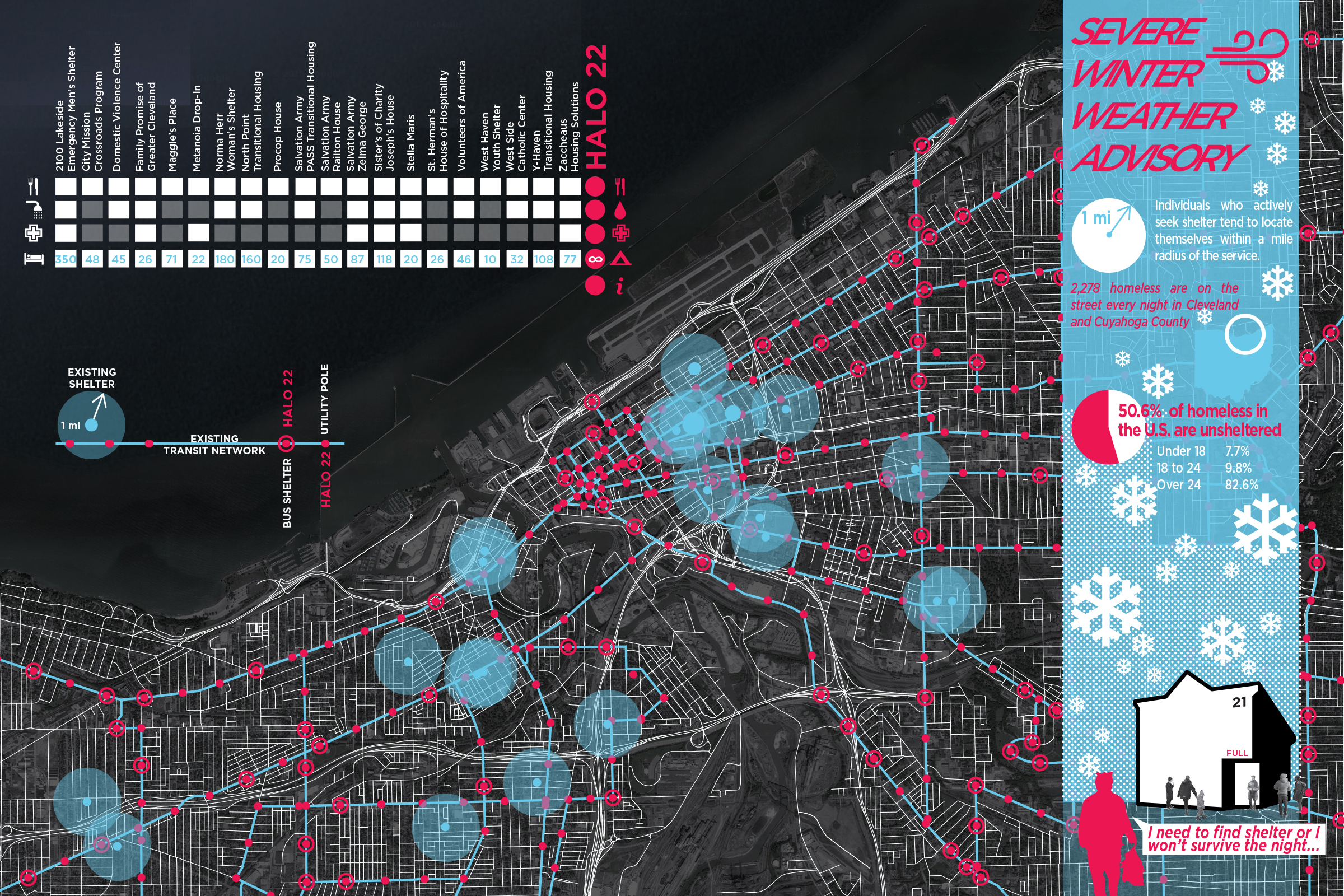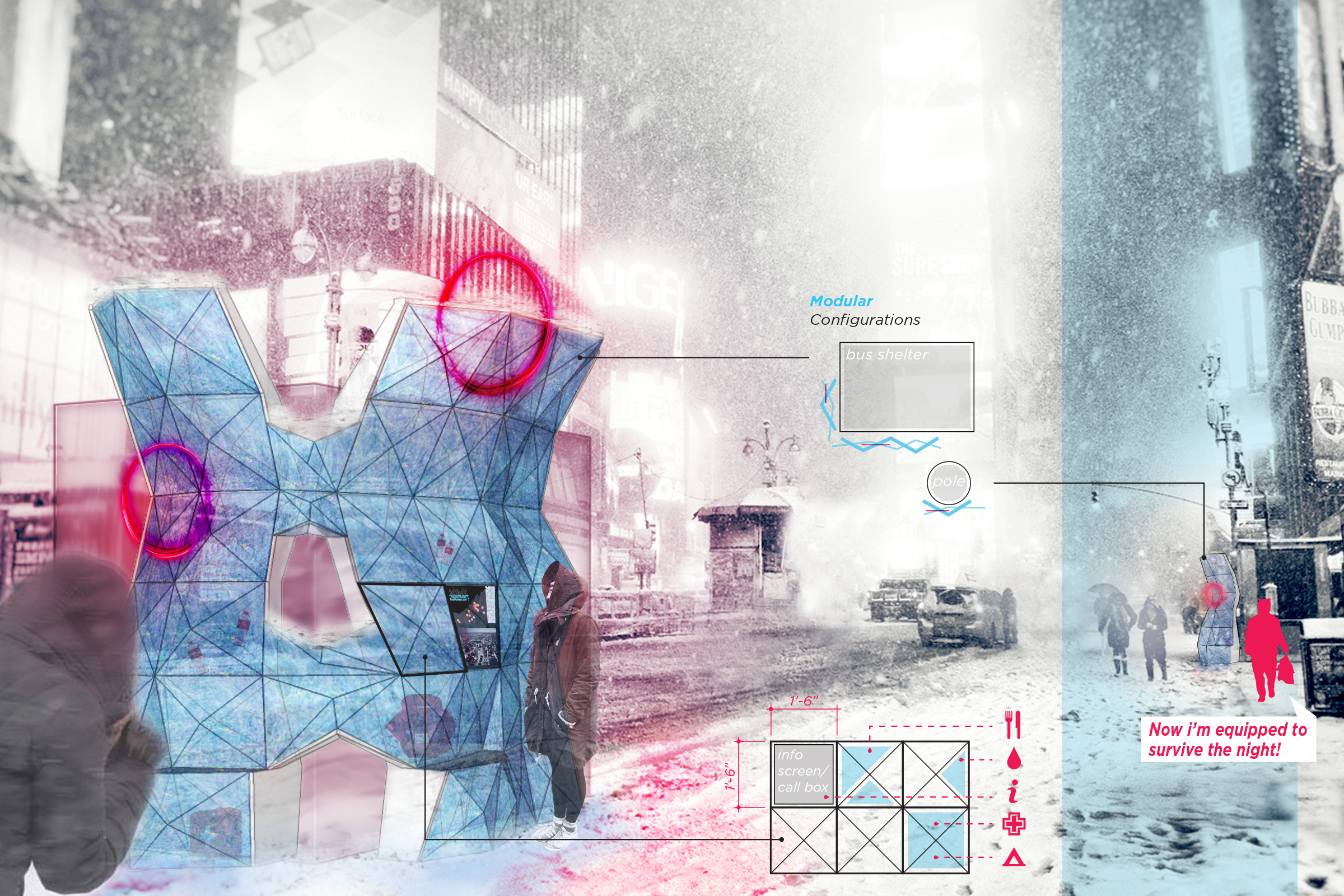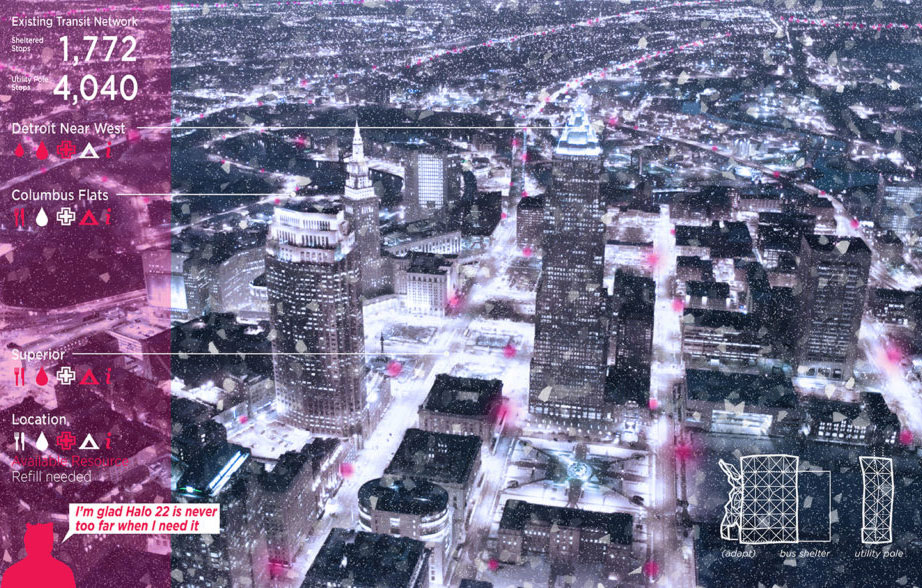COLDSCAPES//Adapt is a multidisciplinary design competition seeking innovative responses to volatile weather conditions in winter cities organized by Kent State University’s Cleveland Urban Design Collaborative (CUDC).
Bialosky Cleveland received an Honorable Mention for their submission of HALO 22. The project concept was inspired by the phenomenon from nature known as a 22˚ halo, an illusion caused by ice crystals refracting light in the atmosphere, forming a circular glow around the source. From this idea, the concept of HALO 22 was born, providing a critical step in survival for the homeless while beautifying the urban realm in the process.

In Northeast Ohio there are 21 homeless shelters where people seek refuge from the elements. On freezing cold nights, the shelters overflow with people needing protection from the harsh conditions, and many are turned away due to the lack of space. With no resources to survive, HALO 22 provides those who were sent away with temporary shelter, food, water, first aid, and information.
Inspired by the 22˚ halo, circular light installations are attached to existing networks of infrastructure (such as bus signs and bus shelters). The halos appear suspended in a crystalline container that holds the supplies. In milder conditions, they appear as works of art, bringing light and interest to a space. However, in freezing, dangerous conditions, HALO 22 installations become beacons of hope, signaling help to those who need it the most.

The competition team included Jeff Jasinski, Julie Roberts, Sai Sinbondit, Jeremy Smith, and Brad Valtman, with David Craun and Ted Ferringer serving as team advisors.
This year’s Coldscapes Competition was the second installment of an international competition hosted by the Cleveland Urban Design Collaborative. For more information, please visit the Coldscapes competition website at http://www.cudc.kent.edu/cold/2016-coldscapesadapt-competition-winners/.
